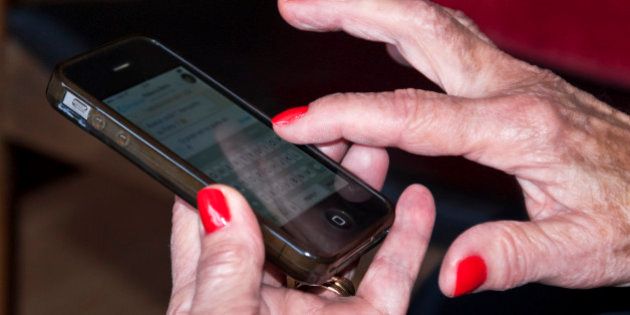
At 90, Barbara Beskind is the oldest member of the human-centred design team, IDEO, in Silicon Valley. She is a firm believer of the power of technology in improving lives and is surprised that so few technology innovations cater to improving the lives of the elderly. In a recent interview with the Wall Street Journal she describes the need for technology such as air bags that will reduce impact while falling, devices with immediate translation technology and walkers that improve stability and posture. Unfortunately, she stands as a minority voice in a business and consumer environment catering only to the young and middle-aged.
Even as the world's population ages at a rate higher than ever before and the predominantly young Indian demographic becomes older, few technology innovations are catered to the senior citizen segment, out of the fear that this may seem insulting to users and unprofitable to business operations. Unfortunately, even existing technology innovations such as mobile phones, laptops and desktops are not built for easier function and use by this section of society.
"By focussing technology innovations on only one section of the population, we must be aware of the large section that gets excluded, resulting in a loss of opportunities for innovation."
I have increasingly noticed that most individuals past their middle-age fear technology and fail to see its use in easing their life. This is far from the truth. Technology can provide convenience, speed and automation to the lives of the elderly. As technology progresses in India, senior citizens have the opportunity to be more independent with the help of convenient technology services including mobile/internet cab booking services such as Uber, grocery shopping services such as Bigbasket.com, internet banking services and the like. However due to the lack of knowledge, help available and difficulty of use, they shy away from the use of such services.
There are many aspects of technology design for senior citizens that remain unaddressed. Old age brings along with it a decrease in certain capabilities, specifically:
•Decline in cognitive function -- the ability to think, focus, generate ideas, remember and the speed of information processing are likely to be reduced.
•Decline in vision -- focusing on objects, colour matching, decreased visibility in the dark and sensitivity to colour may become difficult as people age. Senior citizens may also be prone to eye disease such as cataracts, diabetic retinopathy and glaucoma.
•Decline in hearing -- the ability to distinguish sounds and high pitched consonants are reduced.
•Decline in motor functions and the weakening of muscles and bones, leading to frequent falls.
Numerous approaches and modifications can be done to improve user interfaces on mobile and desktops for the elderly. This modification is needed to overcome some of the problems often faced by this group. Some features that can be modified to make smartphones user-friendly include the following.
Increasing screen visibility: Increasing standard text size on desktops and laptop screens can significantly help mobile phone usage among senior citizens. Other changes that can be made include the use of soft colours (as elderly people are prone to vision problems while dealing with bright colours), more use of white/grey backgrounds and larger images, icons and graphical content.
Keypad spacing and button placement: Sensory and psychomotor functions of the elderly are affected, resulting in weakness, numbness, loss of muscle coordination, pain, stiffness, tremors, rigidity and slow movement. This can be a hindrance as senior citizens attempt to tap on smartphone or desktop buttons. The use of large taps targets makes it easier for older adults to see targets, to distinguish between adjacent targets, as well as allowing them to more accurately acquire tap targets. Larger touchable areas compensate for issues related to movement, control and hand dexterity. Additionally, button placement of features such as volume, camera, music etc. must be conspicuous and easy to access.
Customer support services 24/7: As the ability to learn new things and memory declines with age, the initial adjustment to the use of a mobile phone may be difficult. Often when a sudden doubt about the usage of a particular function on a device arises, help may not always be around for a senior citizen. Making a provision for 24/7 support by technology vendors either on call or easily accessible through help pages on the device itself can go a long way is preventing this.
Moving beyond traditional features: Today portable devices move beyond their basic functions to become an all-in-one tool-kit. Features such as the torch, FM radio, music, magnifiers, and emergency call buttons can be very useful features for senior citizens, helping them to ease their day-to-day functions. Having a good battery life or providing a spare battery can be a plus point, equipping senior citizen users for any unexpected situation.
As technology develops, it needs to head in a direction that embraces diversity and prioritises inclusion. The remarkable thing about technology is the way in which it has helped improve the quality of life of people the world over. By focussing technology innovations on only one section of the population, we must be aware of the large section that gets excluded, resulting in a loss of opportunities for innovation.



Contact HuffPost India